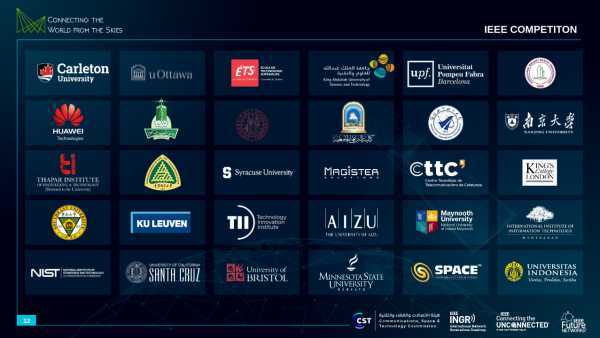
First place and a $10,000 prize was awarded to a proposed solution for integrating terrestrial and terrestrial networks called the Multi-Mode Altitude Platform Station (HAPS) for Future Wireless Networks (pictured).
It was the work of Safwan Alfattani (King Abdulaziz University, Saudi Arabia and University of Ottawa, Canada), Vael Jafar (High School of Technology, Canada), Halim Yanikomeroglu (Carleton University, Canada) and Abbas Yongakoglu (University of Ottawa, Canada).
Including the Altitude Platform Stations (right), it is based on their paper “A Vision and Framework for Future Altitude Platform Station (HAPS) Networks,” which was published in IEEE Communications Surveys and Tutorials (Vol. 23, no. 2, pp. 729- 779, 2021).
"Access to affordable broadband should be the norm, not a privilege," said Mohammed Altamimi, governor of Saudi Arabia's Communications, Space and Technology Commission. "More than ever, we need to build bridges between industry, public and private sectors to improve collaboration and use innovative technologies to ensure that no one is left behind in the global digital economy."
The global competition was organized by the IEEE Future Networks Initiative and sponsored by CST as part of the CST NTN program.
In total, 28 works were submitted, works of more than 100 participants from 17 countries and 34 universities and research centers.
“Reaching the unconnected will require an innovative combination of fixed, terrestrial and satellite networks not only to ensure continuity of service, but also to enhance service availability and ensure ubiquitous seamless coverage everywhere,& #8221; added Mario Manevich, Director of the ITU Radiocommunication Bureau.
Held in Riyadh, Saudi Arabia, the meeting was held online over three days and was organized by the ITU (International Telecommunication Union) and the Communications and Information Technology Commission (CITC) of Saudi Arabia.
The winners
The winners are described as follows:
1st Place - Multi-Mode Altitude Platform Station (HAPS) for Future Wireless Networks - Safwan Alfattani (King Abdulaziz University, Saudi Arabia and University of Ottawa, Canada); Wael Jaafar (École de Technologie Supérieure, Canada); Halim Yanikomeroglu (Carleton University, Canada); Abbas Yongakoglu (University of Ottawa, Canada) for the presentation of a solution for the integration of terrestrial and non-terrestrial networks, improving the quality of service.
2nd place - Toward equal access to 6G network through cloud-based high-altitude platform systems - Rawan Alghamdi (King Abdullah University of Science and Technology (KAUST), Saudi Arabia); Hayssam Dahrouj (King Abdullah University of Science and Technology (KAUST) and NEOM Center of Research Excellence, Canada); Tarek Y. Al-Naffuri (King Abdullah University of Science and Technology, USA); Mohamed-Slim Alouini (King Abdullah University of Science and Technology (KAUST), Saudi Arabia) for presenting a solution for providing coverage in remote areas with wireless services over terrestrial networks.
3rd place and #8211; Communication of unmanned aerial vehicles in integrated terrestrial and non-terrestrial networks - Mohamed Benzaghta and Giovanni Gueraci (Pompeu Fabra University, Spain); Rasul Nikbakht (Centre Tecnològic de Telecomunicacions de Catalunya (CTTC), Spain); David López-Perez (Huawei Technologies France) for presenting a solution for the development of 5G services through integration with terrestrial networks, which reduces the cost of wireless services.
You can find learn more about Connecting the World from the Skies.
Source: electronicsweekly.com










